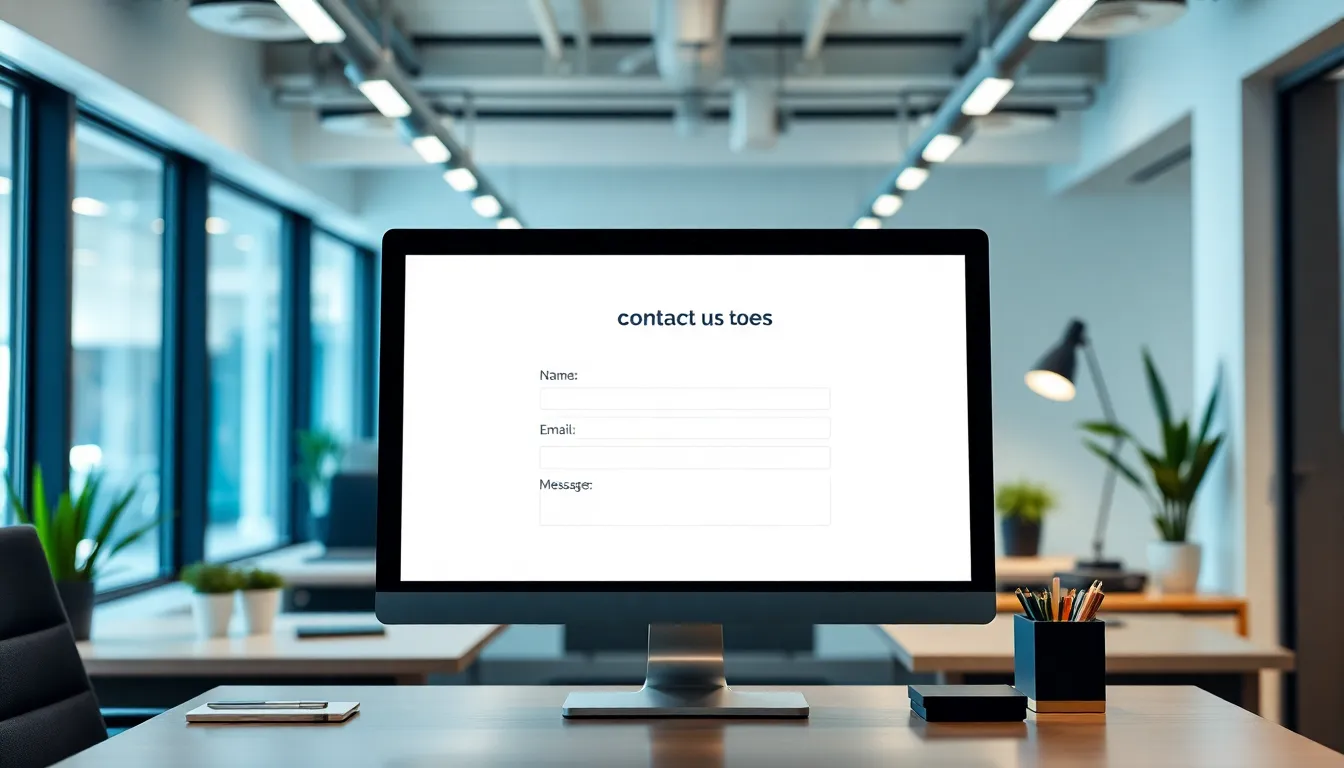In today’s fast-paced digital world, a responsive contact us form isn’t just useful, it’s essential. Think of it like a welcome mat for your website: it invites visitors in. And let’s face it, no one wants to sweep crumbs away when someone knocks. It creates opportunities for engagement, feedback, and even customer loyalty. Who knew that a few fields and a submit button could open so many doors? Ready to jump into the nitty-gritty? Let’s explore the top reasons why perfecting your contact us form can make all the difference.
Table of Contents
ToggleImportance of a Contact Us Form

A well-designed contact us form serves as the bridge between a business and its audience. In this digital age, where social media and emails often dominate, a contact us form always holds its ground. It demonstrates a commitment to customer service by providing a direct channel for inquiries and feedback. When users engage actively, they feel accepted and heard, enhancing their overall experience on the site.
Also, from a business perspective, understanding customer needs and inquiries allows for better service delivery and product development. Each query presents an opportunity to improve and adapt, making the form invaluable. It’s not just about gathering information: it’s about cultivating relationships in an easy and accessible manner.
Features of an Effective Contact Us Form
Not all contact us forms are created equal. An effective form typically includes several key features:
- Simplicity: A cluttered form can discourage users. Keep it straightforward, name, email, message, and perhaps a phone number if necessary.
- Responsive Design: Users access sites on various devices. The form should adapt seamlessly across desktops, tablets, and smartphones.
- Clear Instructions: Use placeholder text or brief descriptions to clarify each field’s purpose. It’s like having a friendly guide through the maze of inquiries.
- Captcha or Spam Protection: Protect the form from unwanted submissions without making it a hassle for genuine users. A simple and effective captcha can save time and frustration.
- Confirmation Message: Once users hit that submit button, let them know their message was received, reinforcing that their voice matters.
- Optional Fields: While less is often more, providing optional fields for additional information can be helpful for businesses without overwhelming the user.
How to Design a User-Friendly Contact Us Form
Designing a user-friendly contact us form is less about aesthetics and more about functionality. Start with a clean layout that doesn’t intimidate. Utilitarian design principles can go a long way in enhancing usability. Here are some guidelines:
- Limit Fields: Fewer fields mean lower barriers. Ask only for essential information to keep the conversation flowing.
- Logical Flow: Arrange fields in an intuitive order, most users expect their name to come first, followed by contact details and the message.
- Errors and Feedback: When users make errors, provide immediate feedback. Highlight problematic fields but keep the tone positive to encourage corrections rather than frustration.
- Test the Form: Before launching, test it across multiple devices and browsers. Usability tests can spotlight hidden issues that could derail user experience.
Common Mistakes to Avoid
Even seasoned professionals can stumble when creating a contact us form. Here are common pitfalls:
- Overcomplicating the Form: The more fields added, the greater the chance of user drop-off. Stick to what’s necessary.
- Neglecting Mobile Users: Not optimizing for mobile is a cardinal sin. Many users will access the form via their phones, ensure it’s mobile-friendly.
- No Follow-Up: Allowing inquiries to go unanswered leads to lost opportunities. A timely response maintains engagement and trust.
- Ignoring Data Privacy: Make sure users feel safe about sharing information. Clearly stated privacy policies can alleviate concerns and encourage submissions.
Integrating the Contact Us Form with Your Site
Integration is key when it comes to making a contact us form effective. Position it prominently on your website, typically in the header or footer, and ensure it’s easy to locate. Also, embedding the form within relevant pages, such as product or blog pages, can provide context for why users might want to reach out.
Using analytics tools to track form submissions can also be beneficial, giving insights into user interaction. Connecting the form to a customer relationship management (CRM) system enhances the efficiency of follow-ups and responses. Automate where possible, an automatic acknowledgment email reassures users their inquiry is in process.
Tips for Responding to Inquiries Promptly
Once inquiries start flooding in, responding promptly is crucial. Here are some tips:
- Set Expectations: Let users know when they can expect a reply, if you’re swamped, a quick email explaining this can work wonders.
- Prioritize: Not all inquiries are created equal: some may require immediate attention, while others can wait a bit longer.
- Personalize Responses: A generic reply can be off-putting. Use the sender’s name and reference their inquiry to create a connection.
- Use a Template: Develop standard responses for common inquiries, but ensure they are customizable to maintain a personal touch.




